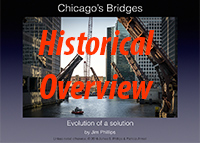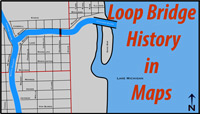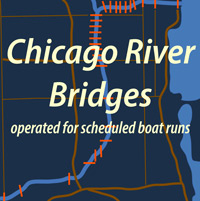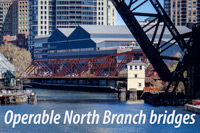Chicago Ave Bridge 1914-2018
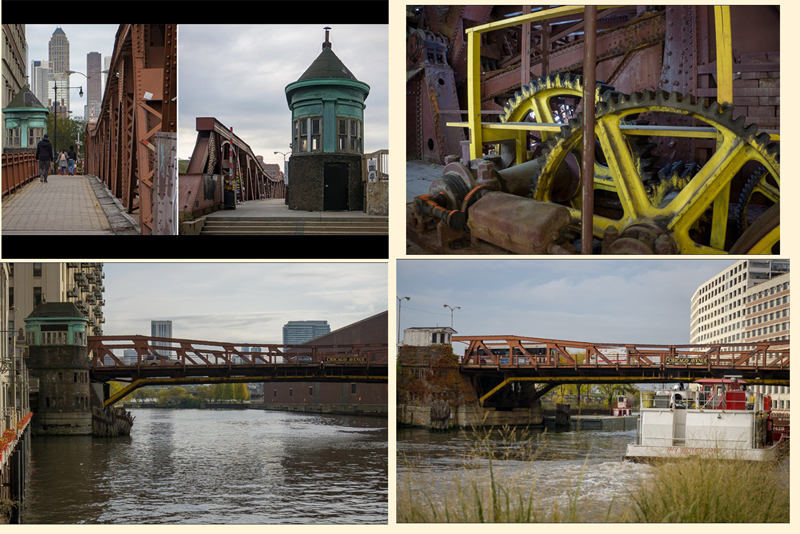
Chicago Ave bridge in 2018
The demolition of the Chicago Ave bridge began on November 1, 2018. The bridge will be replaced by a temporary fixed bridge within a five month period. The permanent replacement will not be a bascule.
Because this was an historically significant second generation Chicago-type bascule, Chicago offered it at no cost to any interested party that had the capability and the resources to move it to a new location. Unfortunately the bridge was in such poor condition that dismantling, moving, and reassembling it at a new location was not economically feasible.
The photos above were taken on October 30, 2018, two days before the demolition began. One of the unique features of this bridge was that the sidewalk along the east bank of the river passed through the gear room of the bridge. This allowed a close-up view of key equipment that raised and lowered the bridge.
The first bridge at Chicago Avenue was built in 1849.
Planning for the current Chicago Avenue bridge started in 1911. To maintain traffic at this crossing during construction of the bascule bridge, a temporary pontoon bridge was opened to traffic in January of 1912. The old swing bridge was removed by the end of March that year.
Work began on the substructure in March 1913 and the superstructure early in 1914. The leaves were lowered to the closed position in August 1914. The first street car crossed the bridge on October 4th, pedestrians on October 12th, and team traffic on October 15th. The pontoon bridge was decommissioned on October 15th as well.
The operational data (how many “swings”) for the temporary pontoon provided in the CPW Annual Reports provides a window into the amount of vessel traffic on the river at this point in time. For the almost three years the pontoon bridge was in place it was operated about 27,000 times. The bascule bridge was operated a total number of 1,606 times in its first full year of service (1915). Hard to imagine looking at the river traffic today.
The Chicago Avenue bridge was the first of the second generation bridges to have operator houses not made of wood. Until this point in time the appearance of operator houses was not considered a priority. With the adoption of the 1909 Plan of Chicago, that changed. While the impact is more apparent in the Loop Bridges, operator houses post 1914 were no longer wood framed structures but steel framed with concrete, masonry, or stone facades.
This bridge was a part of a group of second generation Chicago-type bridges that were completed from 1913 to 1914. This group included bridges at Washington Blvd., Grand Ave., and Ewing Ave. (92nd). All of these bridges share similar specifications. Differences are most apparent in the operator houses.
Additional information can be found at Historicbridges.org.
****
Sources:
CPW Annual Reports 1890; 1912-1915
Patrick McBriarty, Chicago River Bridges, University of Illinois Press, 2013, p235
****
***Back to North Branch Page***

